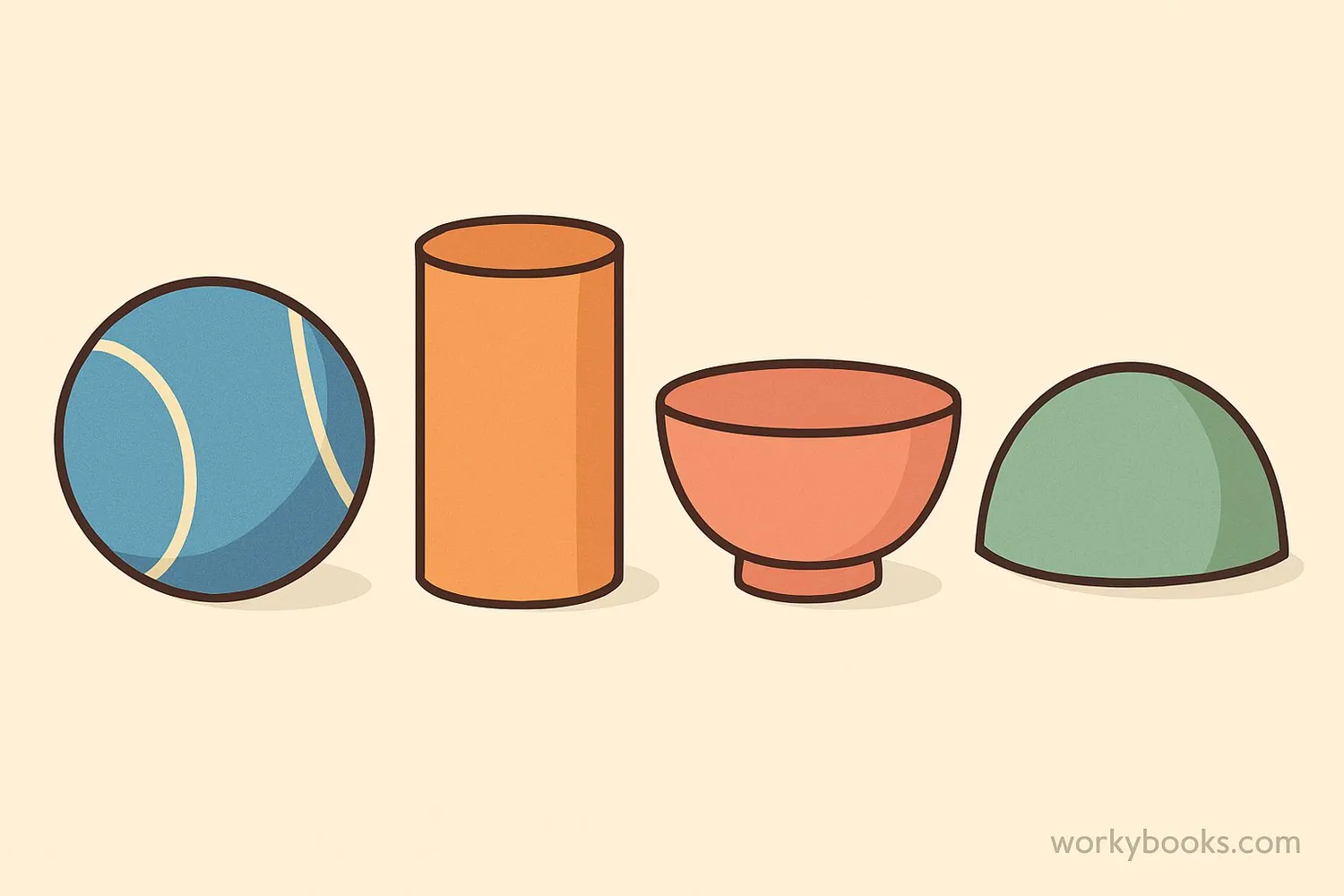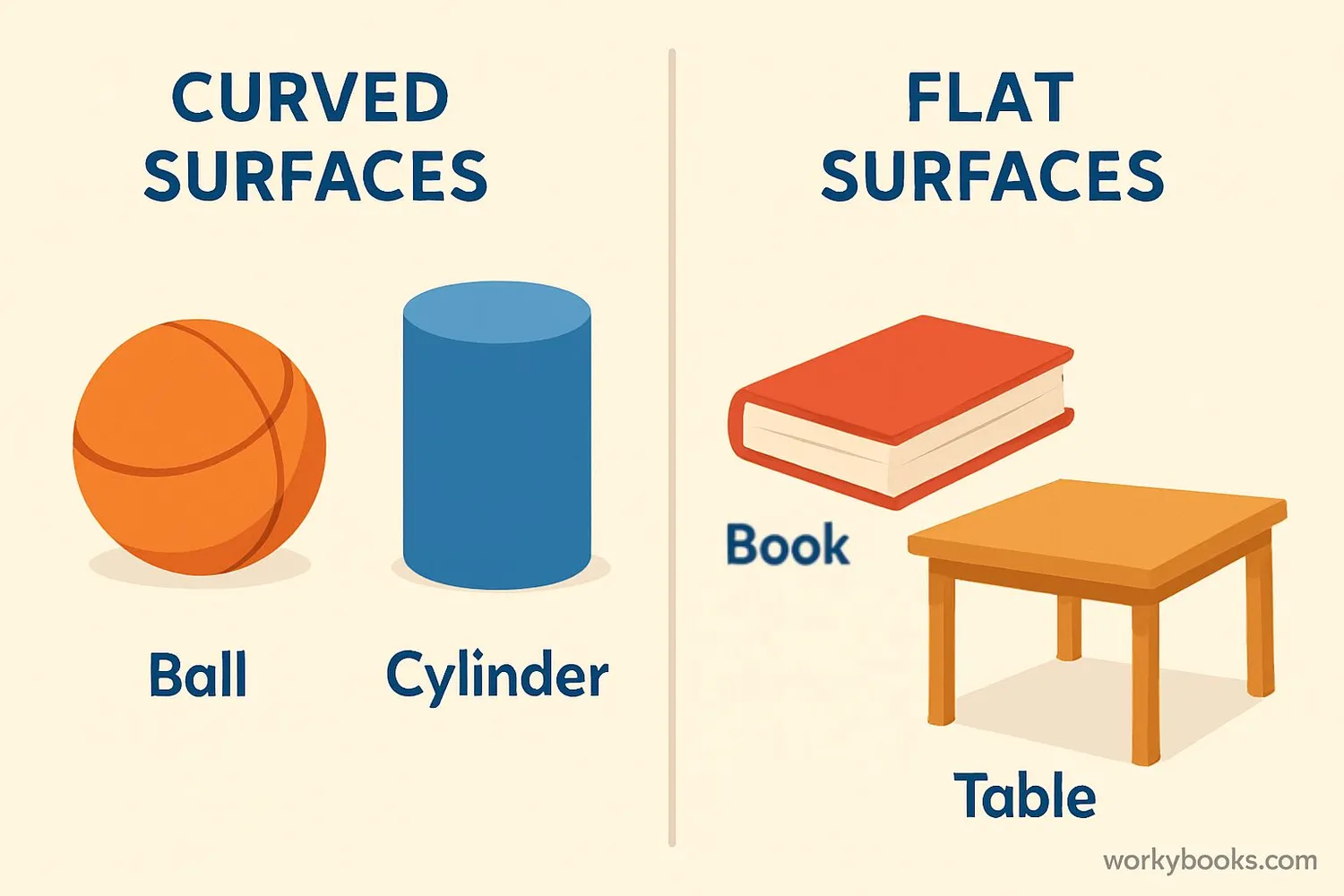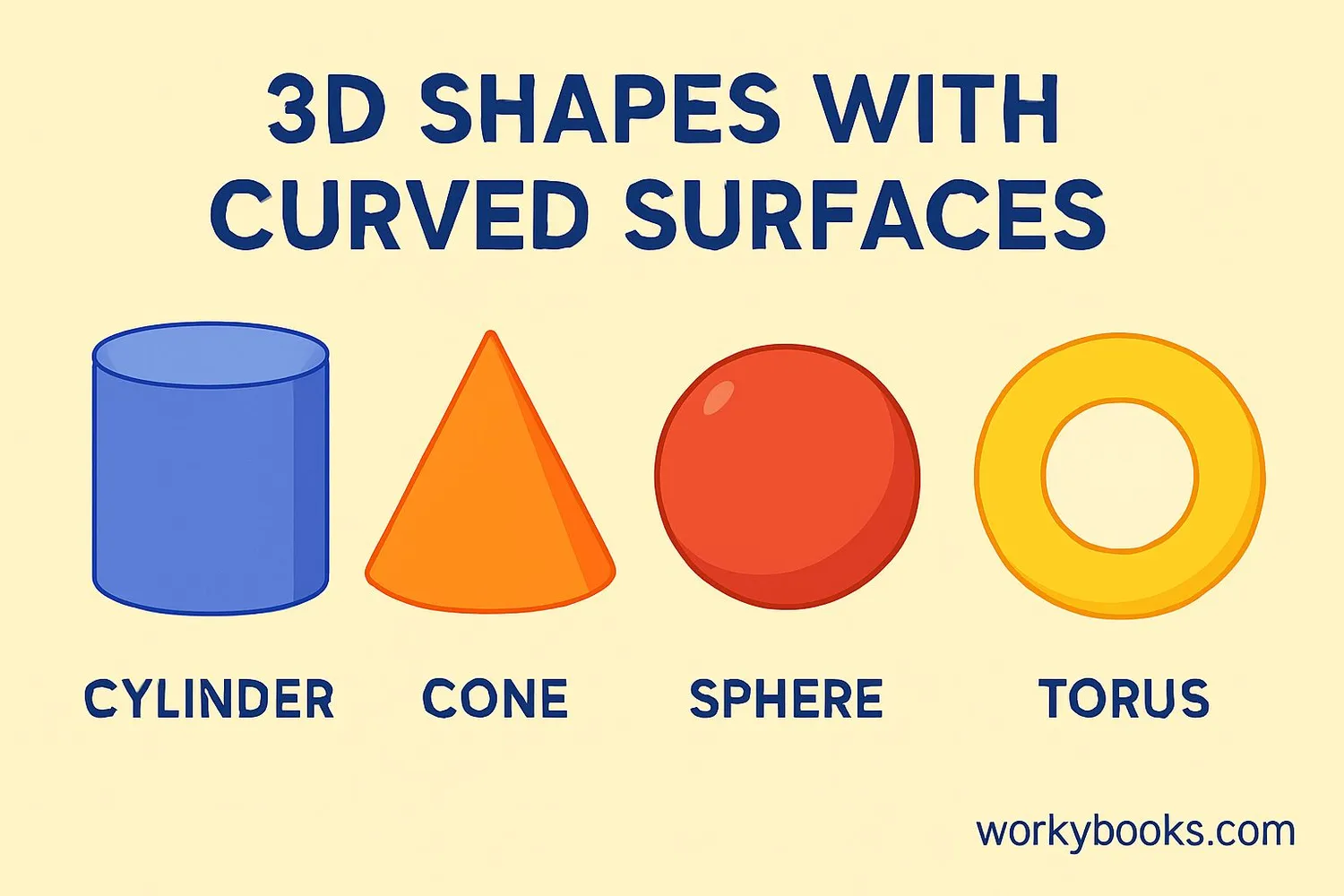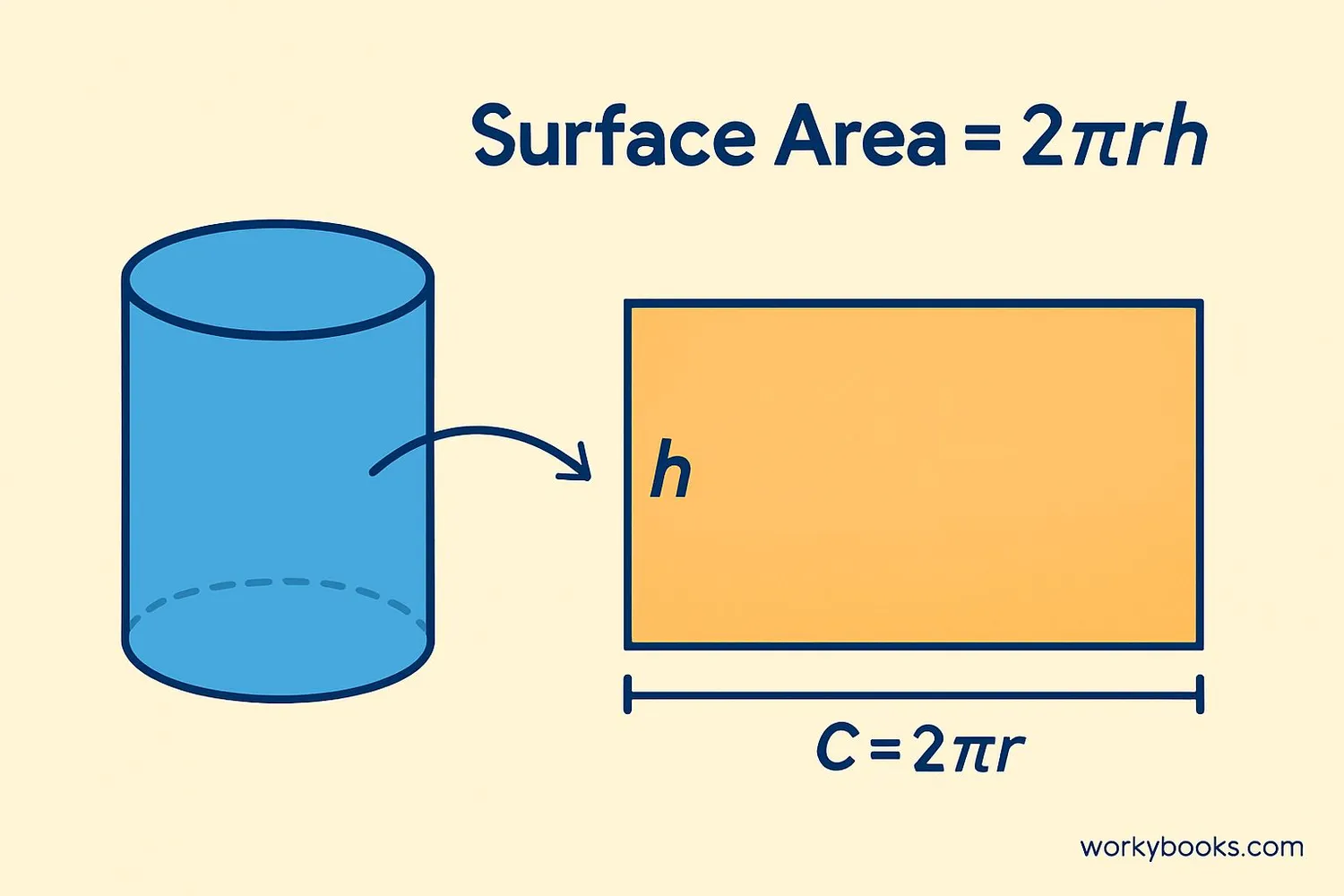Curved Surfaces - Definition, Examples, Quiz, FAQ, Trivia
Learn about curved surfaces with simple explanations, examples, and interactive activities
What is a Curved Surface?

A curved surface is any surface that isn't flat. Instead of being straight like the pages of your book, it bends and curves like a ball or a cylinder.
Curved surfaces are all around us! Think about:
- A basketball that you can bounce
- A drinking glass that you hold
- The dome of a planetarium
- A slide at the playground
In geometry, curved surfaces help us understand how shapes behave in the real world. They're different from flat surfaces because they don't have straight edges or flat planes.
Key Concept
A curved surface has no straight lines and bends smoothly. It's the opposite of a flat surface which is completely straight.
Curved Surface vs. Flat Surface

Let's understand the difference between curved and flat surfaces:
Flat surfaces:
- Completely straight with no curves
- Have straight edges
- Examples: Floor, wall, table top, book page
Curved surfaces:
- Have a bending, rounded shape
- No straight edges
- Examples: Ball, cylinder side, bowl, egg
Try this: Look around your room. Can you find three flat surfaces and three curved surfaces?
Completely straight with no curves
Smoothly bending with no straight parts
Remember
Some objects have both flat and curved surfaces! A can of soda has a curved side but flat top and bottom.
Examples of Curved Surfaces

Many shapes in geometry have curved surfaces. Here are the most common ones:
A perfectly round ball shape with a curved surface all around
Has a curved side surface with two flat circular ends
Has a curved side surface that tapers to a point
A donut shape with curved surfaces all around
Real-world examples:
- A basketball is a sphere
- A soda can is a cylinder
- An ice cream cone is... a cone!
- A car tire is a torus
Fun Fact
The Earth is almost a sphere, which is why we have a curved horizon when we look out at the ocean!
Curved Surface Area

The curved surface area is the area of just the curved part of a 3D shape, not including the flat parts.
Here's how we calculate it for different shapes:
Cylinder Curved Surface Area
Where r is radius and h is height
Cone Curved Surface Area
Where r is radius and l is slant height
Sphere Surface Area
Where r is radius (sphere has only curved surface)
Solution: 2 × π × 3 × 5 = 30π ≈ 94.2 cm²
Remember
The curved surface area doesn't include the flat bases. For a cylinder, that means we don't include the top and bottom circles.
Curved Surface Quiz
Test what you've learned with this 5-question quiz. Choose the correct answer for each question.
Frequently Asked Questions
Here are answers to common questions about curved surfaces:
Geometry Trivia
Discover interesting facts about curved surfaces:
Ancient Geometry
The ancient Greeks studied curved surfaces over 2,000 years ago. Archimedes discovered formulas for the surface area of a sphere around 250 BC!
Nature's Curves
Many natural structures use curved surfaces for strength. Eggshells, seashells, and even our eyeballs are curved because this shape distributes pressure evenly.
Architectural Marvels
The Pantheon in Rome has a massive dome that was the world's largest unreinforced concrete dome for over 1,300 years. Its curved surface distributes weight perfectly.
Space Geometry
Spacecraft often use curved surfaces because they are stronger and more aerodynamic than flat surfaces. The curvature helps withstand pressure changes in space.


